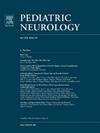登革热相关急性坏死性脑病是急性坏死性脑病的变异型而非模仿型:来自系统综述的证据。
IF 3.2
3区 医学
Q2 CLINICAL NEUROLOGY
引用次数: 0
摘要
背景:登革热脑炎的双侧丘脑出血性病变与急性坏死性脑病(ANE)的病变相似。我们研究了登革热相关ANE(DANE)是否应被视为ANE的变异体或模仿体:方法:对 PubMed 和 SCOPUS 上的登革热脑炎文献进行系统回顾(从开始到 2022 年 12 月 31 日)。采用ANE、急性脑炎(AE)、急性播散性脑脊髓炎(ADEM)和感染诱发脑病综合征的诊断标准:分析了 103 篇文章中 162 名患者(中位年龄 20 [0.4 至 79] 岁;69 [42.3%] 名女性;72 [44.4%] 名患者年龄小于 18 岁)的数据。DANE(62 例,38.3%)最常见,其次是AE(56 例,34.6%)和ADEM(27 例,16.7%)。主要临床特征为发热(100%)、血小板减少(79.0%)、头痛(57.8%)和癫痫发作(43.7%)。DANE 患者的神经系统恶化时间(3.5 [1 至 8] 天 vs 其他脑炎综合征的 5 [1 至 14] 天,P = 0.0127)、癫痫发作(54.2% vs 37.4%,P = 0.0471)、较高的脑脊液(CSF)蛋白(0.92 [0.18 至 4.8] vs 0.73 [1 至 16] g/L,P = 0.0469)、丘脑(100% vs 8.0%)和出血性脑损伤(73.3% vs 7.5%,P < 0.0001)。66.7%和78.6%的DANE患者出现脑脊液多细胞和脑脊液登革热IgM/病毒聚合酶链反应阳性。DANE患者的死亡率为16.1%,40.6%的幸存者致残。高风险 ANE 严重程度评分预示着不良后果(阳性预测值为 64.3% [95% 置信区间为 38.8% 至 83.7%]):结论:DANE不同于其他登革热脑炎综合征,在临床放射学上与散发性ANE无异,有足够证据将其视为ANE变异型。本文章由计算机程序翻译,如有差异,请以英文原文为准。
Dengue-Associated Acute Necrotizing Encephalopathy Is an Acute Necrotizing Encephalopathy Variant Rather than a Mimic: Evidence From a Systematic Review
Background
Bilateral hemorrhagic thalamic lesions in dengue encephalitis resemble lesions seen in acute necrotizing encephalopathy (ANE). We investigate whether dengue-associated ANE (DANE) should be considered an ANE variant or a mimic.
Methods
Systematic review of dengue encephalitis literature from PubMed and SCOPUS (inception to December 31, 2022). Diagnostic criteria for ANE, acute encephalitis (AE), acute disseminated encephalomyelitis (ADEM), and infection-triggered encephalopathy syndromes were applied.
Results
Data on 162 patients (median age 20 [0.4 to 79] years; 69 [42.3%] female; 72 [44.4%] aged ≤18 years) from 103 articles were analyzed. DANE (62, 38.3%) was the commonest, followed by AE (56, 34.6%) and ADEM (27, 16.7%). The main clinical features were fever (100%), thrombocytopenia (79.0%), headache (57.8%), and seizures (43.7%). Patients with DANE had earlier neurological deterioration (3.5 [1 to 8] vs 5 [1 to 14] days in other encephalitis syndromes, P = 0.0127), seizures (54.2% vs 37.4%, P = 0.0471), higher cerebrospinal fluid (CSF) protein (0.92 [0.18 to 4.8] vs 0.73 [1 to 16] g/L, P = 0.0469), thalamic (100% vs 8.0%) and hemorrhagic brain lesions (73.3% vs 7.5%, P < 0.0001). CSF pleocytosis and positive CSF dengue IgM/viral polymerase chain reaction were reported in 66.7% and 78.6% with DANE. Mortality was 16.1% in DANE, and 40.6% of survivors had disability. High-risk ANE severity scores predicted poor outcomes (positive predictive value 64.3% [95% confidence interval 38.8% to 83.7%]).
Conclusion
DANE differs from other dengue encephalitis syndromes and is clinicoradiologically indistinguishable from sporadic ANE with sufficient evidence to be considered an ANE variant.
求助全文
通过发布文献求助,成功后即可免费获取论文全文。
去求助
来源期刊

Pediatric neurology
医学-临床神经学
CiteScore
4.80
自引率
2.60%
发文量
176
审稿时长
78 days
期刊介绍:
Pediatric Neurology publishes timely peer-reviewed clinical and research articles covering all aspects of the developing nervous system.
Pediatric Neurology features up-to-the-minute publication of the latest advances in the diagnosis, management, and treatment of pediatric neurologic disorders. The journal''s editor, E. Steve Roach, in conjunction with the team of Associate Editors, heads an internationally recognized editorial board, ensuring the most authoritative and extensive coverage of the field. Among the topics covered are: epilepsy, mitochondrial diseases, congenital malformations, chromosomopathies, peripheral neuropathies, perinatal and childhood stroke, cerebral palsy, as well as other diseases affecting the developing nervous system.
 求助内容:
求助内容: 应助结果提醒方式:
应助结果提醒方式:


